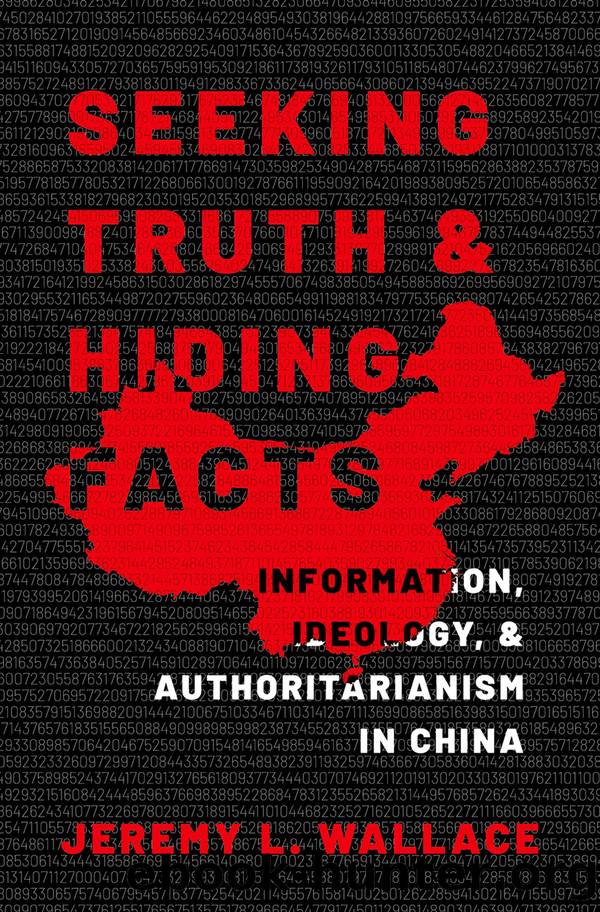Seeking Truth and Hiding Facts by Jeremy L. Wallace;

Author:Jeremy L. Wallace;
Language: eng
Format: epub
Publisher: Oxford University Press USA
Published: 2022-06-15T00:00:00+00:00
Corruption
Corruption was both the genius and the comeuppance of the system of limited, quantified vision. Decentralization inspired initiative by lower-level officials, in part by allowing them and theirs to profit personally from the new development agenda rather than resisting their more complete authority over the territories eroded at the beginning of the Reform Era. However, in the years leading up to and after the global financial crisis, corruptionâs pervasive stench threatened the regime deeply. Yet the corruption narrative in the Reform Era was not a straight line; instead, it morphed in response to various efforts to curtail it, until it grew to massive proportions. While never descending to the growth-destroying ends of full kleptocracy, the political viability of the regime came into question, as both insiders and outsiders increasingly came to view its social purpose as enriching officials and those connected to them.113
Greasing the wheels of reform, officials engaged in all manner of corrupt dealings throughout the 1980s. The price wars discussed above were but one of the many opportunities that officials used to take advantage of the dual-track price system for their own personal gain. The incidence of corruption was roughly constant during the 1990s, but that statistic masks an important shift, as corruption âintensifiedâ during the decade.114 Lower-level officials demanding small-scale payments from individuals were replaced by large-scale cronyism by higher-level officials.115 Privatization of state- or collective-owned firms, including many of the TVEs that were critical to Chinaâs economy taking off under reform, was an opportunity for corrupt officials or their confidants to purchase assets at fire sale rates, transferring significant wealth from public to private hands.116
In the late 1990s, and in the wake of the Asian financial crisis, Zhu Rongji initiated a âmodern rationalization driveâ to improve governance and cut down on corruption, including âstandardizing budget planning and implementation, establishing a single treasury account system, adopting procurement rules . . . and promulgating a new Civil Service Law.â117 These efforts cut down on petty corruptionâmisappropriation of funds and demands for bribesâbut did little to ârestrain [officials] from collecting grand transactional rents.â118 To be sure, such mundane bribery demands continued to exist throughout this period; especially difficult to eliminate were the âpeasant burdensâ that central efforts tried to rein in by remaking rural state finance and ultimately abolishing agricultural taxes.119 The existence of bulk markets in fraudulent tax invoices used to circumvent tax authorities and by officials to supplement their salaries with reimbursements for nonexistent purchases belied the systemâs limitations in dealing with corruption.120 What these reforms were unable to curtail was cronyism and intensification of corruption in land deals, reflecting the 1994 fiscal reforms shift that gave local government authorities more control over land use.121
Yet giving favored players access to underutilized state-controlled assets at low costs was pro-growth corruption, consistent with the overall system of limited, quantified vision.122 Such transactions contributed to local government numbers twice: first, the revenue from the initial land sale; second, the subsequent development occurring on that land. Both were quantified elements core to the cadre evaluation system.
Download
This site does not store any files on its server. We only index and link to content provided by other sites. Please contact the content providers to delete copyright contents if any and email us, we'll remove relevant links or contents immediately.
Adding Value to Policy Analysis and Advice by Claudia Scott; Karen Baehler(455)
Sociological Perspectives of Health and Illness by Constantinos N. Phellas(444)
Race and American Political Development by unknow(441)
Human and Global Security : An Exploration of Terms by Peter Stoett(425)
American Government and Politics Today by Steffen W. Schmidt Mack C. Shelley Barbara A. Bardes(424)
Control Of Oil - Hardback by Kayal(407)
Entrepreneurship Education and Training: The Issue of Effectiveness by Colette Henry Frances Hill Claire Leitch(364)
The Catholic Church and European State Formation, AD 1000-1500 by Jørgen Møller(355)
Materializing the Middle Passage by Jane Webster;(349)
The World According to China by Elizabeth C. Economy(343)
Left Is Not Woke by Susan Neiman(328)
Turkey's Relations with the West and the Turkic Republics: The Rise and Fall of the Turkish Model by Idris Bal(313)
Theories of Counseling and Psychotherapy: A Case Approach by Nancy L. Murdock(313)
Cross-Cultural Child Development for Social Workers by Lena Robinson(306)
Japan's Ainu Minority in Tokyo by Mark K. Watson(297)
Advances in Child Development and Behavior, Volume 37 by Patricia J. Bauer(295)
Laboratory Life by Bruno Latour(294)
Beyond Service: State Workers, Public Policy, and the Prospects for Democratic Administration by Greg McElligott(284)
The Oxford Handbook of Museum Archaeology by Stevenson Alice;(275)
